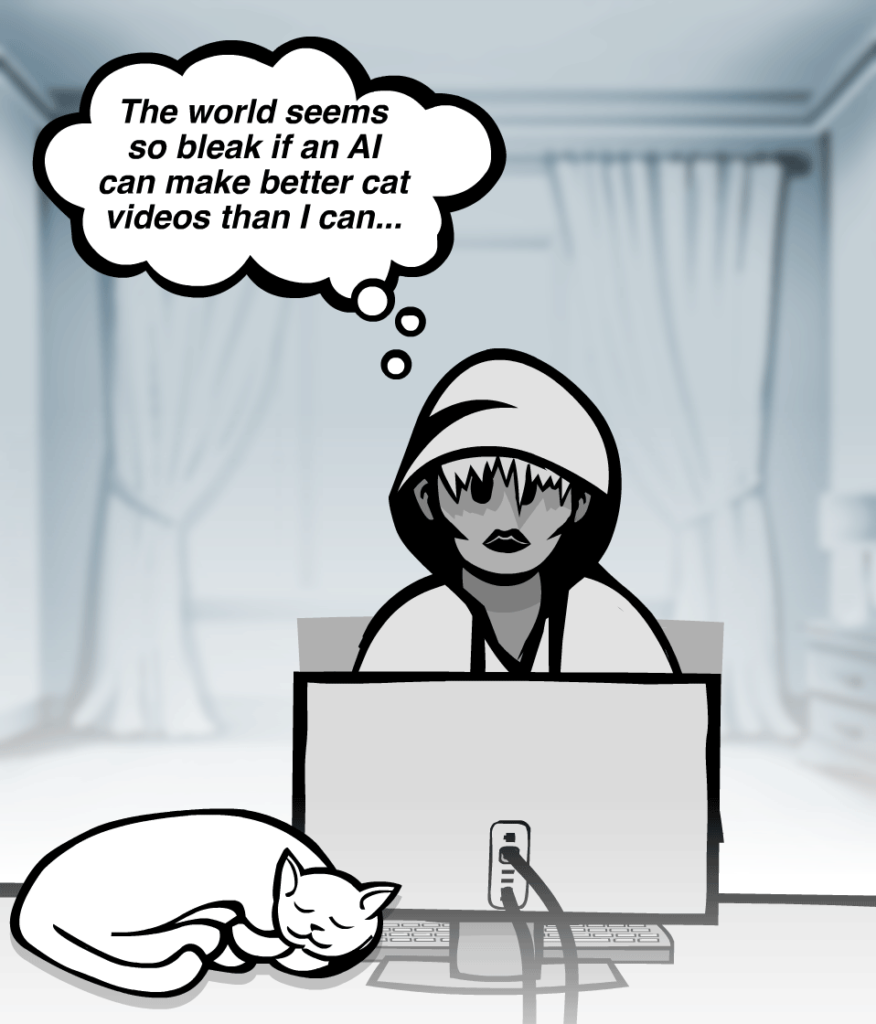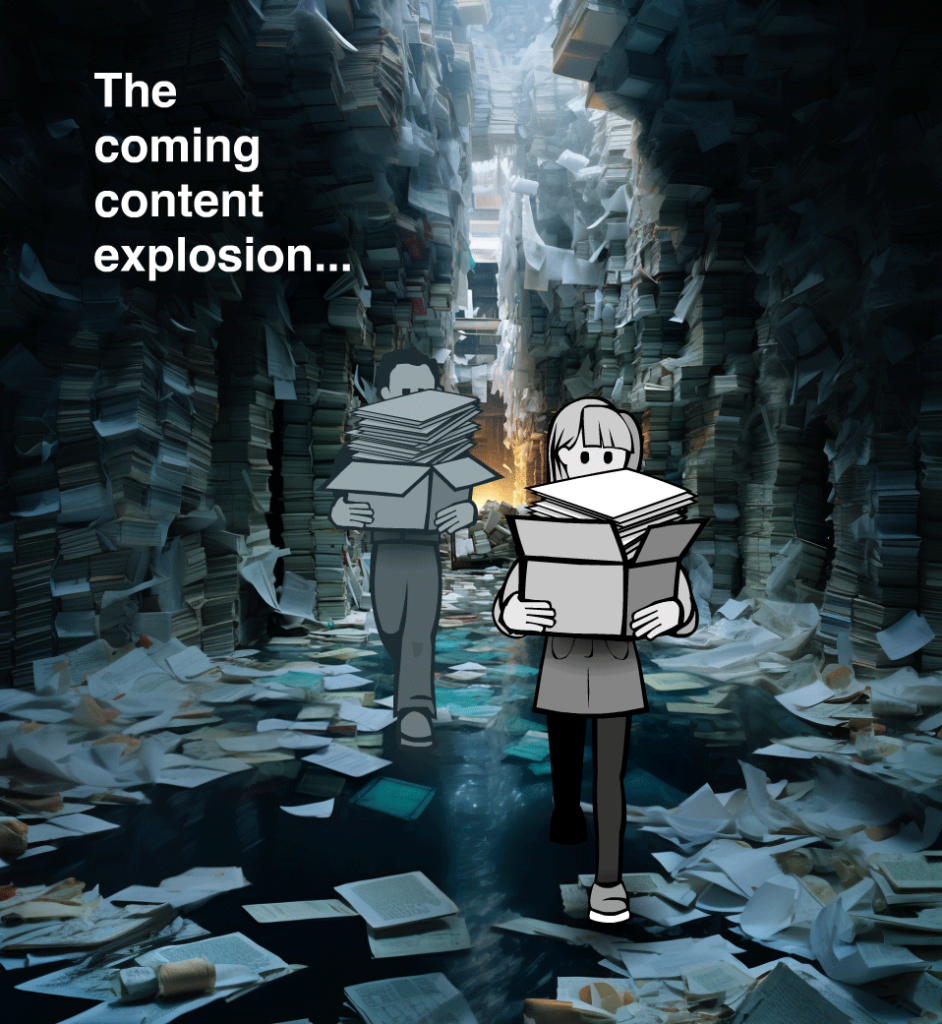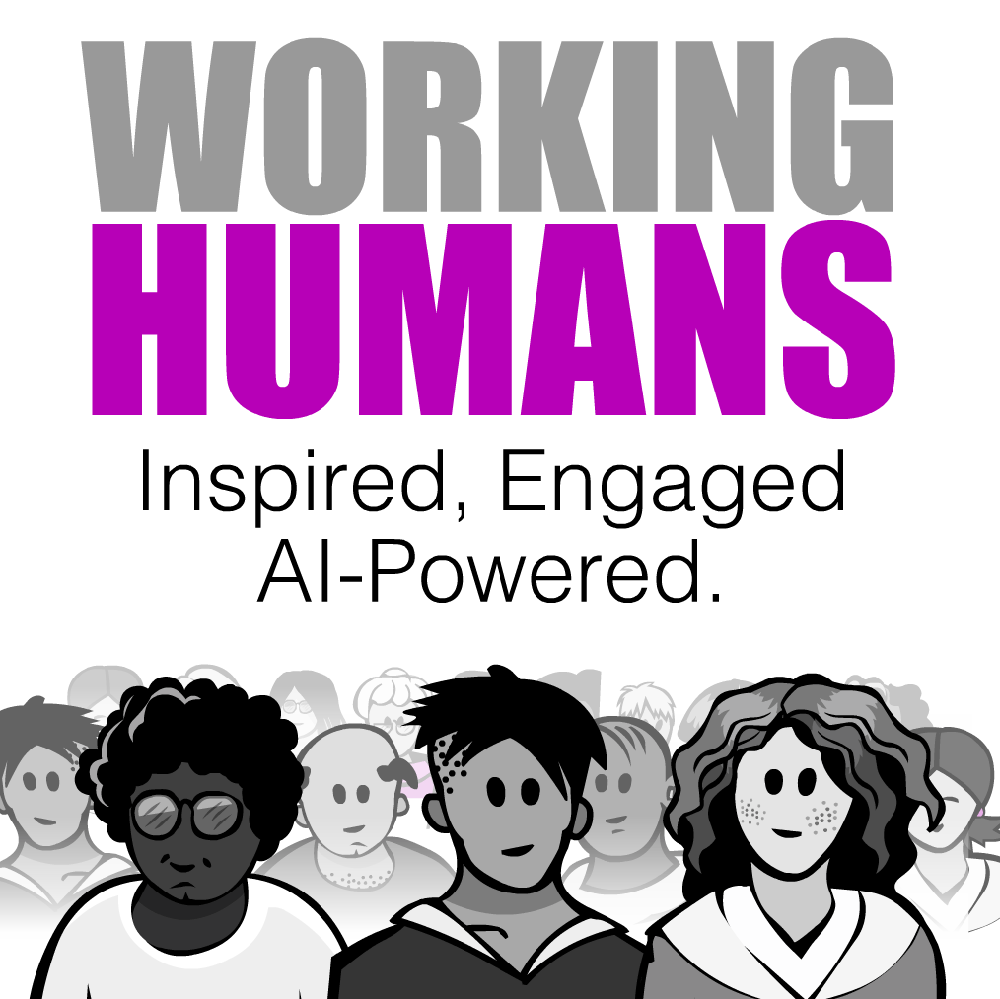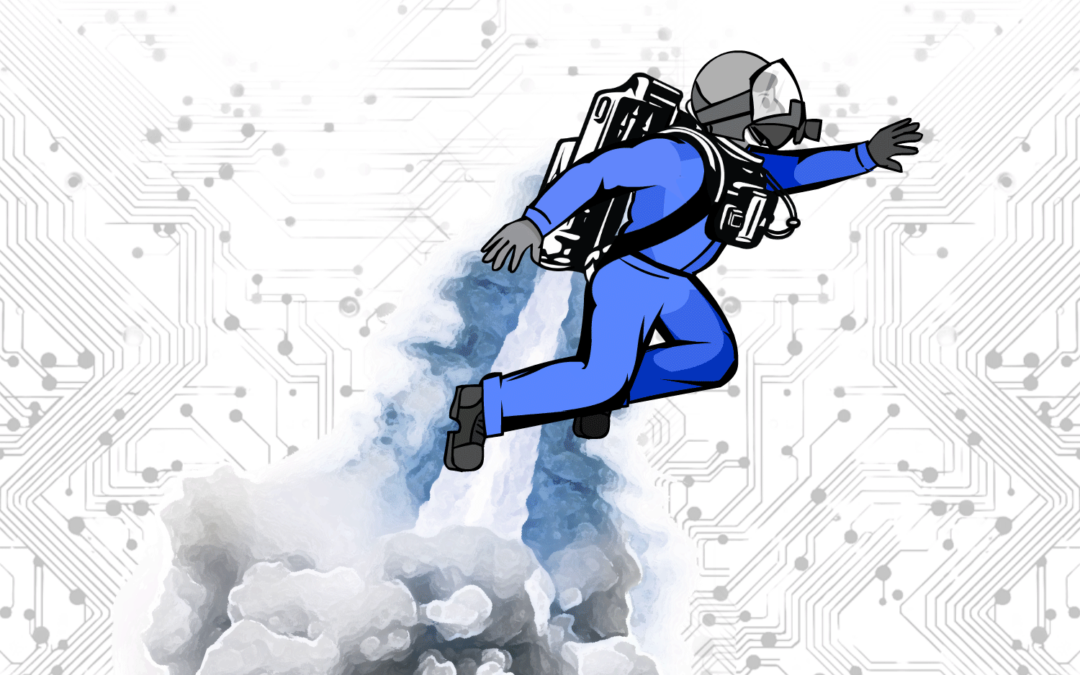AI-Powered Leadership
Fiona Passantino, late November 2023
As non-technical professionals are learning about AI and, one by one, incorporating it into their workflows, the bar will slowly be raised about the office. Employees will soon be expected to handle a wider range of tasks and responsibilities because they can process information and perform tasks at higher speed and at scale that surpasses their traditional colleagues. This efficiency will lead to higher expectations for everyone. Are we ready to be 10xed?
AI and Our Jobs
Right now, any communications manager in a given organisation might tell you that her team is expected to be a 100% Human-generating content engine. While some might be dipping into AI to do some of the non-essential work (such as summarizing and responding to complex emails), the higher-profile parts of the job are written by hand.
But as leaders and managers are becoming more informed by the explosive potential of generative AI, and employees are being trained in these tools, one layer of the organization at a time, it will quickly become clear which professionals are AI-Powered and which are not.
Simply put, there are limits of what we can expect from a traditional 100% Human workflow. There are only about 3-4 hours of good, creative work in a given Human, on the best, most focused days. Combine this with the understanding that 20% of our work generates 80% of the total value of our roles, and you have a good description of a typical Human working day[i].
The AI-Powered professional will be able to produce 10 times the amount of content as their traditional counterparts, from text to video, voice to imagery. They will not need to hire expensive freelancers, such as editors, copywriters, illustrators or translators. Their work will be richly illustrated, multimodal, translated into 20 regional languages and have multiple versions of each for platforms ranging from long-form thought leadership to short social posts. They will be able to transcribe video or audio to text, create original music and turn CEO cocktail napkin sketches into actionable wireframes.

The Co-Creation Workflow
Working with AI as a creative can be seen as a spectrum disorder. In the same way that we don’t consider white rice with nothing on it to be “dinner”, we rarely use GPT text straight from the prompt window, pasting pure generated text as a post, a tweet, an email or a report. Just like our smartphones or the internet, we all use AI differently, and to different degrees. For some, it’s purely a spark, a way to generate thought, and every word that is AI-generated is stripped to its skeletal ideas and fully rewritten, re-arranged, cut, copied, pasted, fused, augmented, fact-checked and humanised before it’s pasted onto a page, email, PowerPoint, post or tweet of any kind. For others, it’s edited.
In the end, each of us arrives at our own comfort level, which will also evolve as our world evolves around us. Every task demands a different level of creative, Human involvement. There are some moments when the white rice serves its purpose; a laundry-list email of questions we might have about a legal contract, would be one example. A detailed list of question ideas to ask a realtor showing us a house we would like to buy would be another. Then the blandness and lack of originality doesn’t bother anyone.
Then there are the moments when we need a non-emotional being to help us with a deeply Human task; we will need ideas to convey warm, affirmative thoughts to a friend who has recently suffered a loss. In the past we would avoid these tasks, then force ourselves to stare at our screens for hours, unsure of how to start, unable to find the words. Everything that comes to mind sounds like a Hallmark card that lost a fight with a blender. We know what we don’t want to say.
Then AI will start us by spitting out a surprisingly neutral yet empathetic starter text that is scraped together from the collective Human results, over centuries, as we all struggled to find those words. It may tend towards sappy, cheerful and impersonal, but it’s something we can work with, rewrite entirely and refine.

Changing Expectations
AI-powered employees will be expected to handle a wider range of tasks and responsibilities because they can process information and perform tasks at a speed and scale that surpasses their traditional colleagues. This efficiency will lead to higher expectations for everyone, and the pre-requisite during the interview process, that being AI-Powered will be a requirement before progressing.
Additionally, as AI becomes more integrated into workplaces, employees will be expected to work seamlessly alongside these systems, leveraging their strengths to achieve better results. This shift will require individuals to adapt and acquire new skills to effectively collaborate with AI, ultimately leading to increased expectations for performance.
AI-powered employees will be expected to handle a wider range of tasks and responsibilities because they can process information and perform tasks at a speed and scale that surpasses their traditional colleagues. This efficiency will lead to higher expectations for everyone, and the pre-requisite during the interview process, that being AI-Powered will be a requirement before progressing.
Additionally, as AI becomes more integrated into workplaces, employees will be expected to work seamlessly alongside these systems, leveraging their strengths to achieve better results. This shift will require individuals to adapt and acquire new skills to effectively collaborate with AI, ultimately leading to increased expectations for performance.

No eyeballs to read or watch? There’s a podcast for you!
- Listen to the APPLE PODCAST
- Listen to the SPOTIFY PODCAST
Search for the “Working Humans” podcast everywhere you like to listen. Twice a month, Fiona will dive into the nitty-gritty of employee engagement, communication, company culture and how AI is changing everything about how we work now and in the future. Subscribe so you never miss an episode. Rate, review and share.

About Fiona Passantino
Fiona is an AI Integration Specialist, coming at it from the Human approach; via Culture, Engagement and Communications. She is a frequent speaker, workshop facilitator and trainer.
Fiona helps leaders and teams engage, inspire and connect; empowered through our new technologies, to bring our best selves to work. Her company is Executive Storylines. She is a speaker, facilitator, trainer, executive coach, podcaster blogger, YouTuber and the author of the Comic Books for Executives series. Her next book, “AI-Powered”, is due for release in October 2023.
[i] Glaveski (2018) “The Case for the 6-Hour Workday” Harvard Business Review. Accessed November 19, 2023. https://hbr.org/2018/12/the-case-for-the-6-hour-workday


I am not sure where you’re getting your info, but good topic. I needs to spend some time learning more or understanding more. Thanks for magnificent info I was looking for this information for my mission.
Bravo, I think this is a great idea.
thanks for your note!
Write more, thats all I have to say. Literally, it seems as though you relied on the video to make your point. You clearly know what youre talking about, why waste your intelligence on just posting videos to your weblog when you could be giving us something enlightening to read?
After study a few of the blog posts on your website now, and I truly like your way of blogging. I bookmarked it to my bookmark website list and will be checking back soon. Pls check out my web site as well and let me know what you think.